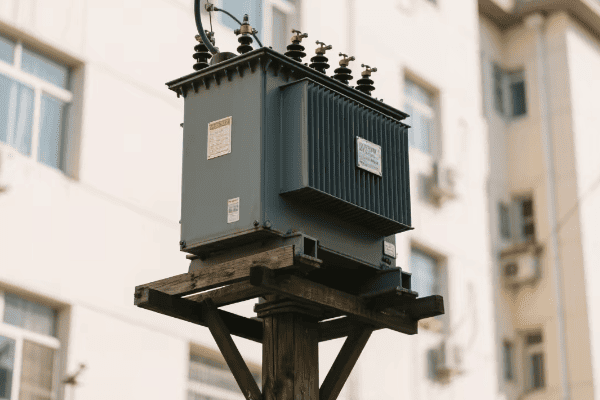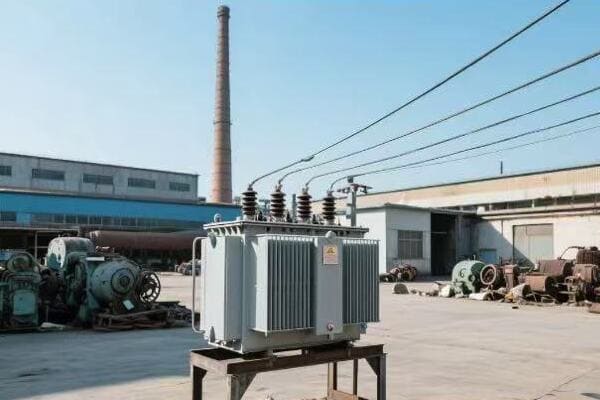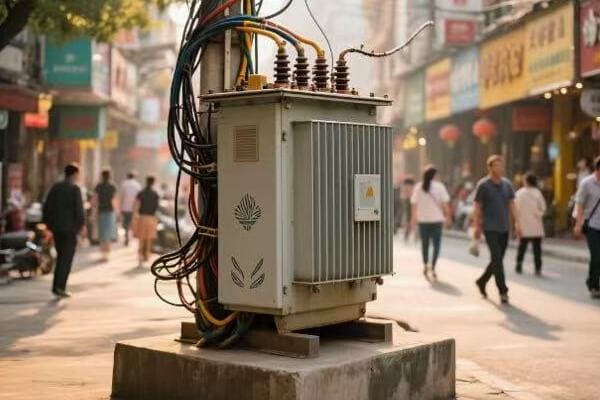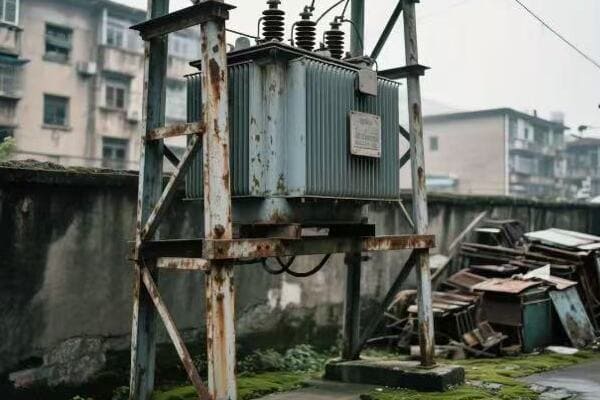Have you ever wondered how cities manage to power everything from small homes to large skyscrapers? The secret lies in the variety of pad mounted transformer sizes available.
Pad mounted transformer sizes are crucial in meeting diverse urban energy demands. These transformers come in various capacities, from small units powering residential areas to large ones supporting industrial zones, ensuring efficient power distribution across cities.

As someone who's worked in the power industry for years, I've seen firsthand how important it is to choose the right transformer size. Let's explore how these different sizes shape our urban power landscape.
Urban Energy Spectrum: Matching Transformer Sizes to City Power Needs?
Cities are like living organisms, each part needing different amounts of energy. Choosing the right transformer size is like picking the perfect shoe size - it needs to fit just right.
Matching transformer sizes to city power needs involves analyzing various factors such as population density, types of buildings, and expected power consumption. The goal is to ensure reliable power supply while avoiding overbuilding or underserving areas.

Let's break down how different areas of a city require different transformer sizes:
Residential Areas
In residential zones, we typically use smaller transformers:
- These areas have lower power demands
- Transformers here often range from 25 kVA to 100 kVA
- They need to be quiet and blend into the neighborhood
Commercial Districts
Commercial areas need medium to large transformers:
- Power demands are higher due to businesses and offices
- Sizes often range from 300 kVA to 2500 kVA
- They need to handle peak loads during business hours
Industrial Zones
Industrial areas require the largest transformers:
- Heavy machinery and constant operation demand high power
- Transformers here can be 3000 kVA or larger
- They need to be robust and handle continuous heavy loads
Mixed-Use Developments
These areas need versatile transformer solutions:
- Power demands vary throughout the day
- Often use a mix of transformer sizes
- Require careful planning to balance diverse needs
| Area Type | Typical Transformer Size | Key Considerations |
|---|---|---|
| Residential | 25-100 kVA | Quiet operation, aesthetic blending |
| Commercial | 300-2500 kVA | Peak load handling, reliability |
| Industrial | 3000+ kVA | Continuous heavy load, robustness |
| Mixed-Use | Varied (100-2000 kVA) | Flexibility, balanced distribution |
In my experience, getting this match right is crucial. I once worked on a project where a rapidly growing residential area was underserved by its existing transformers. We had to quickly upgrade to larger units to prevent brownouts. It taught me the importance of not just meeting current needs, but also planning for future growth. The right transformer size can make the difference between a thriving, well-powered community and one struggling with constant energy issues.
Size Selection Criteria: Optimizing Transformer Dimensions for Urban Infrastructure?
Choosing the right transformer size is like solving a complex puzzle. It's not just about power output; it's about fitting into the urban landscape both physically and functionally.
Optimizing transformer dimensions for urban infrastructure involves balancing power capacity, physical space constraints, safety requirements, and future scalability. The goal is to maximize efficiency while minimizing the transformer's footprint in crowded urban environments.

Let's dive into the key criteria for selecting the right transformer size:
Load Requirements
This is the starting point for size selection:
- Calculate the total connected load
- Consider peak demand and load factor
- Allow for future load growth (typically 25-30% extra capacity)
Physical Space Constraints
Urban areas often have limited space:
- Measure the available installation area
- Consider clearance requirements for maintenance
- Check local zoning laws and regulations
Environmental Factors
The environment plays a big role:
- Assess ambient temperature ranges
- Consider altitude (affects cooling efficiency)
- Evaluate exposure to elements (may need special enclosures)
Safety and Regulations
Safety is paramount in urban settings:
- Ensure compliance with local electrical codes
- Consider fire resistance requirements
- Plan for noise reduction in residential areas
Scalability and Future Needs
Cities are always evolving:
- Assess potential for area development
- Consider modular designs for easy upgrades
- Plan for smart grid integration capabilities
| Criteria | Importance | Impact on Size Selection |
|---|---|---|
| Load Requirements | High | Determines base capacity needed |
| Space Constraints | High | Limits physical dimensions |
| Environmental Factors | Medium | Affects cooling and enclosure needs |
| Safety Regulations | High | May require additional features |
| Scalability | Medium | Influences oversize considerations |
In my career, I've seen the consequences of overlooking these criteria. I once consulted on a project where a transformer was undersized for its location. It couldn't handle the summer heat and kept shutting down. We had to replace it with a larger unit with better cooling, which was a costly mistake that could have been avoided with proper initial planning.
Another time, we installed a transformer that was technically correct for the load but too large for the space. It caused issues with pedestrian traffic and had to be relocated, costing time and money. These experiences taught me the importance of considering all factors, not just electrical requirements, when selecting transformer sizes for urban areas.
Efficiency Across Scales: How Transformer Sizes Influence Urban Power Distribution?
When it comes to urban power distribution, size really does matter. The size of a transformer can make a big difference in how efficiently power is distributed across a city.
Transformer sizes significantly influence urban power distribution efficiency. Larger transformers generally offer better efficiency for high loads, while smaller units provide flexibility and reduced losses for lower demand areas. The key is finding the right balance for each urban zone.

Let's explore how different transformer sizes affect power distribution:
Efficiency in Large Transformers
Bigger isn't always better, but it often is for high-demand areas:
- Large transformers (1000+ kVA) are more efficient at full load
- They have lower core losses relative to their capacity
- Ideal for industrial zones and dense commercial areas
Advantages of Smaller Units
Smaller transformers have their place too:
- Better for areas with fluctuating or lower demands
- Reduced no-load losses, important for residential areas
- Offer more flexibility in placement and load management
Load Factor Considerations
The load factor is crucial in determining efficiency:
- High load factors favor larger transformers
- Low load factors might be better served by multiple smaller units
- Urban areas often have mixed load factors, requiring careful planning
Distribution Network Design
Transformer size affects the entire distribution network:
- Larger units can reduce the number of transformers needed
- Smaller units allow for more granular power management
- The right mix can optimize the overall network efficiency
Energy Loss Patterns
Different sizes have different loss characteristics:
- Core losses are constant, regardless of load
- Copper losses increase with load
- Balancing these losses across transformer sizes is key to efficiency
| Transformer Size | Efficiency at Full Load | Best Application |
|---|---|---|
| Small (< 100 kVA) | 97-98% | Residential, small commercial |
| Medium (100-1000 kVA) | 98-99% | Mixed-use, medium commercial |
| Large (> 1000 kVA) | 99%+ | Industrial, large commercial |
In my experience, the impact of transformer size on efficiency is often underestimated. I once worked on a project to optimize power distribution in a mixed-use urban development. We initially planned to use a few large transformers for simplicity. However, after analyzing the load patterns, we decided to use a mix of sizes. We installed larger units for the base load and smaller ones to handle peak demands. This approach reduced overall losses by 15% compared to our initial plan.
Another time, I was called to consult on why a small business district was experiencing high energy costs despite low usage. We found that the area was served by a single large transformer, which was oversized for the typical load. By replacing it with three smaller units, we were able to significantly reduce no-load losses and improve overall efficiency.
These experiences taught me that in urban power distribution, it's not just about having enough capacity, but about having the right capacity in the right places. The efficiency gains from properly sized transformers can lead to significant energy savings and more reliable power distribution across the urban landscape.
Space-Smart Solutions: Balancing Power Capacity and Urban Real Estate?
In cities, space is at a premium. Balancing the need for power capacity with the reality of limited urban real estate is a challenge I face often in my work.
Space-smart transformer solutions involve innovative designs that maximize power capacity while minimizing physical footprint. This includes compact high-efficiency models, underground installations, and multi-function units that integrate seamlessly into urban landscapes.

Let's explore some strategies for balancing power needs with space constraints:
Compact High-Efficiency Models
New designs pack more power into smaller spaces:
- Use of advanced materials like amorphous metal cores
- Improved cooling systems allow for smaller overall size
- Higher efficiency means less space needed for heat dissipation
Underground Installations
Going underground can free up valuable surface space:
- Vault-style installations hide transformers below ground
- Requires careful waterproofing and ventilation
- Can be combined with other underground utilities
Multi-Function Units
Transformers that do double duty:
- Integrated designs that combine transformer with switchgear
- Units that serve as both power sources and public art
- Transformers built into other urban furniture like benches or planters
Vertical Solutions
When ground space is limited, sometimes we need to think up:
- Stacked transformer designs for multi-story buildings
- Wall-mounted units for industrial or commercial settings
- Rooftop installations in dense urban areas
Modular and Scalable Designs
Flexibility is key in changing urban environments:
- Modular units that can be easily expanded or reduced
- Scalable designs that grow with the neighborhood
- Plug-and-play systems for quick installation and replacement
| Solution | Space Saving | Best Urban Application |
|---|---|---|
| Compact Models | 30-50% | General urban use |
| Underground | 90-100% | Parks, plazas, high-value real estate |
| Multi-Function | 50-70% | Pedestrian areas, smart city initiatives |
| Vertical | 70-90% | High-rise buildings, industrial zones |
| Modular | Varies | Developing areas, tech hubs |
I've seen the impact of these space-smart solutions firsthand. In one project, we were tasked with upgrading the power capacity in a historic district where traditional pad-mounted transformers would have been eyesores. We opted for underground vault installations, preserving the area's charm while tripling the available power.
Another challenging case was a new mixed-use development with severe space constraints. We implemented a combination of compact high-efficiency transformers for base loads and vertical stacked units for high-rise portions. This approach allowed us to meet the power needs without sacrificing valuable real estate for retail or residential use.
These experiences taught me that with creative thinking and modern technology, we can find ways to power our cities without compromising on space or aesthetics. The key is to understand the unique needs of each urban area and tailor the solution accordingly.
Future-Proofing Cities: Adaptive Transformer Sizes for Evolving Energy Landscapes?
As our cities grow and change, so do their energy needs. Future-proofing urban power infrastructure is a challenge that keeps me up at night, but it's also incredibly exciting.
Adaptive transformer sizes are key to future-proofing cities. This involves using scalable and flexible transformer designs that can adapt to changing energy demands, integrate with renewable sources, and support smart grid technologies.

Let's explore how we can prepare our cities for the energy needs of tomorrow:
Scalable Transformer Designs
Flexibility is crucial for future urban needs:
- Modular transformers that can be easily upgraded
- Units with adjustable capacity to match changing loads
- Designs that allow for easy addition or removal of components
Smart Grid Integration
The future is smart, and our transformers need to be too:
- Transformers with built-in sensors and communication capabilities
- Units that can self-diagnose and report issues
- Designs that support bi-directional power flow for renewable integration
Renewable Energy Compatibility
Green energy is the future of urban power:
- Transformers designed to handle variable inputs from solar and wind
- Units with energy storage capabilities to balance intermittent sources
- Designs that can manage micro-grid operations
Energy Efficiency Advancements
Every bit of efficiency counts in the long run:
- Use of new materials like high-temperature superconductors
- Advanced cooling systems that adapt to load and environment
- AI-driven load management for optimal efficiency
Urban Development Considerations
Cities are always evolving, and transformers need to keep up:
- Compact designs that can be easily relocated as cities change
- Units that can be repurposed for different types of urban development
- Transformers that integrate with urban planning software for predictive placement
| Feature | Benefit | Future Impact |
|---|---|---|
| Scalability | Adapts to changing needs | Reduces replacement frequency |
| Smart Integration | Improves grid management | Enables advanced energy services |
| Renewable Compatibility | Supports green initiatives | Facilitates sustainable urban growth |
| Efficiency Advancements | Reduces energy waste | Lowers long-term operational costs |
| Urban Adaptability | Fits evolving city plans | Ensures long-term infrastructure relevance |
In my work, I've already started to see the impact of these future-focused designs. Recently, I was involved in a project to revitalize an old industrial area into a mixed-use smart district. We installed transformers with adjustable capacity and smart grid capabilities. This allowed us to start with lower capacity for the initial development phase and easily scale up as the area grew. The transformers also integrated seamlessly with the solar panels installed on many of the new buildings, managing the flow of energy both to and from the grid.
Another interesting case was a rapidly growing tech hub. We implemented a network of smaller, modular transformers instead of a few large units. This gave us the flexibility to quickly add or relocate power sources as new offices and data centers popped up. The modular nature also meant we could easily upgrade individual units with the latest efficiency technologies without disrupting the entire grid.
These experiences have shown me that the key to future-proofing our urban energy infrastructure lies in adaptability and smart design. By thinking ahead and implementing flexible solutions, we can ensure our cities are ready for whatever energy challenges the future may bring.
Conclusion
Pad mounted transformer sizes play a crucial role in powering our diverse urban landscapes. By carefully selecting and adapting transformer sizes, we can create efficient, flexible, and future-ready power systems for our ever-evolving cities.


